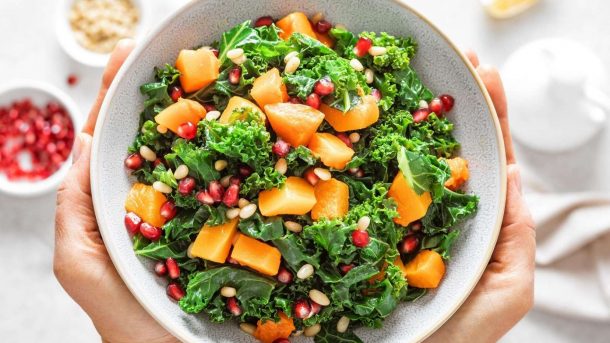Salads are one of those dishes that are super personal. You can tell by how someone orders even the simplest salad at a restaurant how strong tastes run. I'm a hold the onion, hold the tomato, no blue cheese, extra croutons sort of girl and I always order light on the dressing with more on the side the first time I dine at a new place.
Because of those personal preferences on salads, it can be easy to get into a salad rut when preparing them for yourself at home. You'd be shocked to know how many of my own go-to salads are little more than lettuce and cucumber and vinaigrette, with either crumbled feta, croutons, or both.
Believe it or not, winter brings many more salads into my life, as I attempt to balance everything from holiday meals to rich seasonal fare with bright punchy flavors, or to have some lighter meals between the more decadent ones. Which means it's high time to shake things up in the salad bowl.
Related—Seeing Escarole Everywhere in Your Grocery Store? Here's How to Use It
If you are feeling a bit salad stuck, it's time to act. First and foremost, subscribe to the exceptional newsletter The Department of Salad by Emily Nunn, and buckle up for wonderful writing and fantastic recipes that will inspire you to heights of salad perfection you heretofore never imagined.
Second, memorize this formula to make your salads shine at home! These numbers serve one hungry person for a whole meal, or two people for a lighter lunch, or four for an appetizer or side.
And those numbers are 1-2-3-4.
Let's unpack the magic of this formula:
1 cup of something hearty. By hearty, I suggest proteins like meats, cheeses, tofu, or beans or grains like quinoa or wheat berries. You can use a whole cup of a single ingredient or mix them up. I love combos like cubed swiss cheese and ham, crumbled goat cheese and quinoa, or chickpeas and tuna.
2 tablespoons of something crunchy. Crunchy can be croutons of course, but it can also be toasted nuts or fried Chinese noodles.
3 types of vegetables or fruits. Think about balancing textures and flavors here. Stone fruits bring sweetness, snow peas have a crisp green vegetal flavor, radishes a peppery crunch. Dried fruits are both sweet and give great chew, roasted or grilled vegetables add smoky notes. Some combos I love are fennel, green apple, and celery; roasted tomato, peach, and green onion; or grilled zucchini, kohlrabi, and dried apricots. Use between 1/4-1/3 cup of each depending on intensity of flavor, but the variety is more important than the amount.
4 loosely packed cups of leaves. The base of my salads is always about a bowl of leaves to serve as a vehicle for the other ingredients, provide some bulk, and because they capture dressing better than anything else. So, ensure that every bite has that dressing oomph. From iceberg to arugula, kale, escarole, baby spinach, or a variety, four loose cups will fill the bottom of a nice salad bowl.
Related—13 Types of Lettuce—and What to Do With Them
Dressings are up to you: as simple as oil and vinegar, or a fancier blended dressing, homemade or bottled. Start with 2-3 tablespoons and toss; you can always add more.
That's it! 1-2-3-4 your way out of your salad rut and into delicious simple salads whenever you make them. As always, lean into using seasonal ingredients to keep things fresh and delicious, and varied all year long.
The World's Easiest Salad-Making Ratio – MyRecipes




